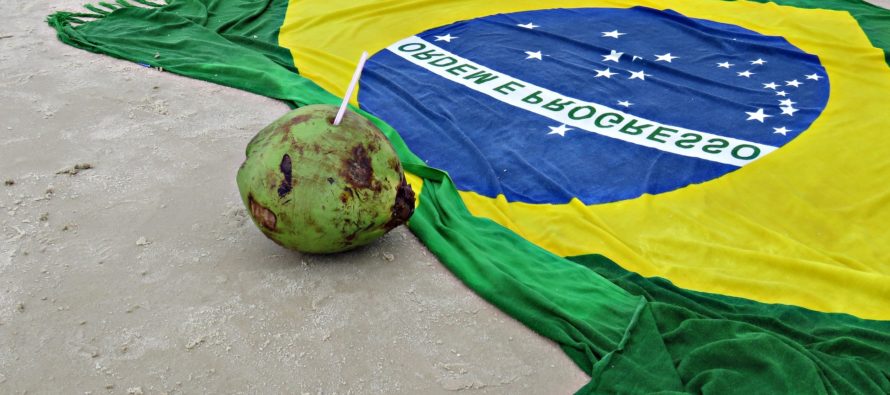Brazil and Other Bright Spots in Latin America

I’ve just been on an extensive trip through Latin America, starting in Mexico and proceeding to Peru, Chile, Argentina and Brazil. Here, I offer a few highlights—including reasons for optimism.
Trade Relations Top of Mind in Mexico
The election of Donald Trump as president of the United States has caused Mexico some concern about its relationship with its neighbor to the north, particularly in the area of trade. President Trump’s stated objective to keep the US dollar’s value weak, in order to aid American companies reliant on exports, is of importance to countries heavily exporting to the United States. It will be interesting to see if he can accomplish this in light of further potential increases in US interest rates, which tend to boost the dollar.
The Trump administration’s policy actions will likely be of critical importance to Mexico, but we must not lose sight of the fact that US-Mexico trade is enormous and is important to both countries. The United States and Mexico are key trading partners, with two-way trade estimated at a total of more than US$580 billion in 2015.1 Trade in both directions is heavily geared toward machinery and manufactured goods. The automobile sector, including vehicles and parts, is Mexico’s top source of exports to the United States. The US auto industry is highly dependent on parts from Mexico, so trade can’t simply be shut down completely.
Mexico is Latin America’s top producer of vehicles, the seventh-largest vehicle producer worldwide, and has a number of free trade agreements with many other countries.2 So, in fact, the United States certainly isn’t Mexico’s only market.
Meanwhile, the United States’ largest export markets are Canada and Mexico, and agricultural products represent some US$18 billion exported to Mexico in 2015.3 In the context of total exports, that number is relatively small, but it’s also politically important. In general, we think fears about economic relations between the United States and Mexico completely breaking down are probably overblown.
That said, there is no question to us most emerging-market countries will need to evaluate their trade strategies in regard to the United States, but also in regard to trade relations broadly.
Brighter Spirits in Brazil
Another important development within many countries in Latin America is the demise of populism. This is actually part of a broader trend we are seeing, where some emerging markets are pulling away from populism at the same time some developed markets—including the United States and parts of Europe—appear to be gravitating toward it.
In the case of emerging markets, we view the rise of the Internet and smart phones as having aided populism’s demise. Greater numbers of people now have knowledge of what is happening at the highest levels of their governments, and have been able to respond and let the world know. Brazil’s so-called “lavo jato” or “car wash” investigations provide a good example.
We recently visited the Brazilian president’s office in Brasília, the capital city, and it was clear government officials were working to institute reforms as quickly as possible, in order to improve the economy and save their political careers.
Most important of these reforms, in our view, is the privatization of a number of government organizations and the general selling of assets in a transparent and systematic manner, including some oil and infrastructure projects including airports.
Brazil has endured an unfortunate economic and political crisis, and that has brought forth a more reform-minded government. We are optimistic that these reforms can continue. While the equity markets have been pricing in progress—Brazil’s Bovespa Index was one of the top-performing markets in the world last year—we still see plenty of potential opportunities ahead.4
During my time in Brazil, I also made my annual trek to Rio to meet with companies, and to experience Carnival during my time off.
Carnival’s Economic Contribution
It is estimated that this year’s Carnival celebrations attracted more than 1 million visitors to the Rio de Janeiro area alone, and contributed R $3 billion (more than US$900 million) to its economy.5
Rio isn’t the only city that has felt a festive mood. Local media in Brazil reported increased numbers of tourists also visiting São Paulo for its celebrations, and 1.5 million people hit the streets in Brasília to view the parades and experience the blocos (street parties).6
And, the revelers spent more money than last year, too, adding a boost to the local economies.
We certainly experienced the traffic jams in Rio, but found the events to be well-organized, as usual.
According to Rio’s Department of Economic Development, the festival in Rio alone created temporary jobs for 250,000 people including carpenters and seamstresses who work throughout the year to prepare the various floats. In the Sambadrome, about 1,000 fast-food vendors are hired for the festivities and Rio’s samba “schools” spend upwards of US$1 million each to put together their shows with elaborate floats, costumes and dances. Carnival offers an example of how important it is to remember that an economy may look bad from a macro point of view, but at the micro level, certain segments could be doing very well.
During our working time in Rio, my colleagues and I visited two companies in the consumer sector, one involved in retail sales and the other involved in shopping malls. The retailer had been delivering solid but historically weaker performance in a very challenging economic environment. It was working to build up Internet sales operations and, like some other companies dependent on Internet sales, the company had been challenged with delivery and logistics problems, particularly during the holidays, and was now making a big capital injection to improve that aspect of the business. At the same time, the company planned to continue accelerating the pace of physical store openings in the coming years in order to be ready for what it expected to be a growing consumer-market recovery.
The shopping mall operator we visited has been able to deliver good sales, but also noted a challenging environment and emphasized cost-controls to drive profit margins. The company was considering possible rent discounts this year to help aid their mall tenants, but it was interesting to note foot traffic had increased.
With President Michel Temer’s proposed reforms, confidence has been improving and there are expectations of a better consumer environment and potentially lower long-term interest rates.
While Carnival always has a celebratory spirit, there was still a sense of crisis for many companies involved in the massive car wash corruption scandal, and investigations were ongoing during my visit to Brazil. However, concluding our Rio visits, it was clear that, despite the economic slowdown, a recovery was underway. Although many companies continue to struggle, we still saw many bright spots.
Emerging Markets: The Bigger Picture
Looking at the bigger picture for emerging markets, we are encouraged to see performance improving, and emerging markets generally outperformed developed markets in 2016.7 We think the stage is set for this trend to likely continue in light of growth projections that continue to outpace that of developed markets.
According to the International Monetary Fund, gross domestic product (GDP) growth in emerging markets this year is forecast at 4.5%, versus 1.9% for the developed countries.8
Latin America is just starting to get its act together. Although Brazil seems likely to eke out economic growth of less than 1% this year,9 we think there could be a potential surge in growth longer term. This year, Mexico’s GDP growth is projected at 1.7%, while growth in Argentina is projected at 2.7%.10
These thoughts are just the tip of the iceberg. We continue our intensive research on individual companies amid rapidly changing economic environments and, despite challenges, we are encouraged by what the future may bring for the region.
You can read more about populism in a Global Macro Shifts research paper by my colleagues at Templeton Global Macro, “Latin America: The Rise and Fall of Populism.” US readers can access the paper here. Readers outside the US can access the paper here.
Mark Mobius’s comments, opinions and analyses are for informational purposes only and should not be considered individual investment advice or recommendations to invest in any security or to adopt any investment strategy. Because market and economic conditions are subject to rapid change, comments, opinions and analyses are rendered as of the date of the posting and may change without notice. The material is not intended as a complete analysis of every material fact regarding any country, region, market, industry, investment or strategy.
Important Legal Information
All investments involve risks, including the possible loss of principal. Investments in foreign securities involve special risks including currency fluctuations, economic instability and political developments. Investments in emerging markets, of which frontier markets are a subset, involve heightened risks related to the same factors, in addition to those associated with these markets’ smaller size, lesser liquidity and lack of established legal, political, business and social frameworks to support securities markets. Because these frameworks are typically even less developed in frontier markets, as well as various factors including the increased potential for extreme price volatility, illiquidity, trade barriers and exchange controls, the risks associated with emerging markets are magnified in frontier markets. Stock prices fluctuate, sometimes rapidly and dramatically, due to factors affecting individual companies, particular industries or sectors, or general market conditions.
___________________________________________________________
1. Source: Office of the United States Trade Representative, data as of 2015.
2. Source: Export.gov, US Department of Commerce Trade Administration. Data as of 2016.
3. Source: Office of the United States Trade Representative, data as of 2015.
4. Past performance is not an indicator or a guarantee of future performance. Indexes are unmanaged, and one cannot directly invest in them. They do not include fees, expenses or sales charges.
5. Source: City government of Rio de Janeiro, International Relations Department press release, March 7, 2017.
6. Source: Government of Brasília (Agencia Brasília) “DF Carnival had an audience of 1.5 million in 2017.”
7. In 2016, the MSCI Emerging Markets Index was up 11.2%, while the MSCI World Index was up 7.5%. The MSCI Emerging Markets Index captures large- and mid-cap representation across 23 emerging-market countries. The MSCI World Index captures large- and mid-cap performance across 23 developed markets. Indexes are unmanaged and one cannot directly invest in an index. Past performance is not an indicator or guarantee of future performance.
8. Source: IMF World Economic Outlook, January 2017 Update. There is no assurance that any estimate, projection or forecast will be realized.
9. Source: IMF World Economic Outlook, January 2017 Update. There is no assurance any estimate, forecast or projection will be realized.
10. Source: IMF; Mexico and Brazil projections as of January 2017; Argentina as of October 2016. There is no assurance that any estimate, projection or forecast will be realized.
Mark Mobius
Mark Mobius, Ph.D., executive chairman of Templeton Emerging Markets Group, joined Templeton in 1987. Currently, he directs the Templeton research team which is based in 18 global emerging markets offices, and manages emerging markets portfolios. Dr. Mobius has been investing in global emerging markets for more than 40 years and has received numerous industry awards, including being named one of Bloomberg Markets Magazine’s “50 Most Influential People” in 2011.
Related Articles
Are Emerging Markets Turning a Corner?
November 13, 2015 Clearly, this year has been challenging for investors in emerging markets, which have generally underperformed developed markets.
US 2020 Election Investment Pulse: Resilience and Vulnerability in Emerging Markets
The US elections have implications for emerging markets in the area of global trade relations in particular, but for investors,
Economic Reform in Asia Brings Big Potential for Small Companies
At Templeton Emerging Markets Group, we believe Asia’s combination of rapid economic growth, generally strong national finances and economic fundamentals



